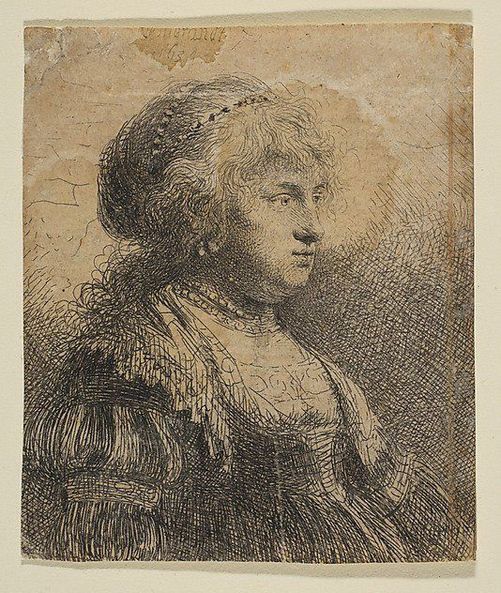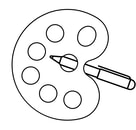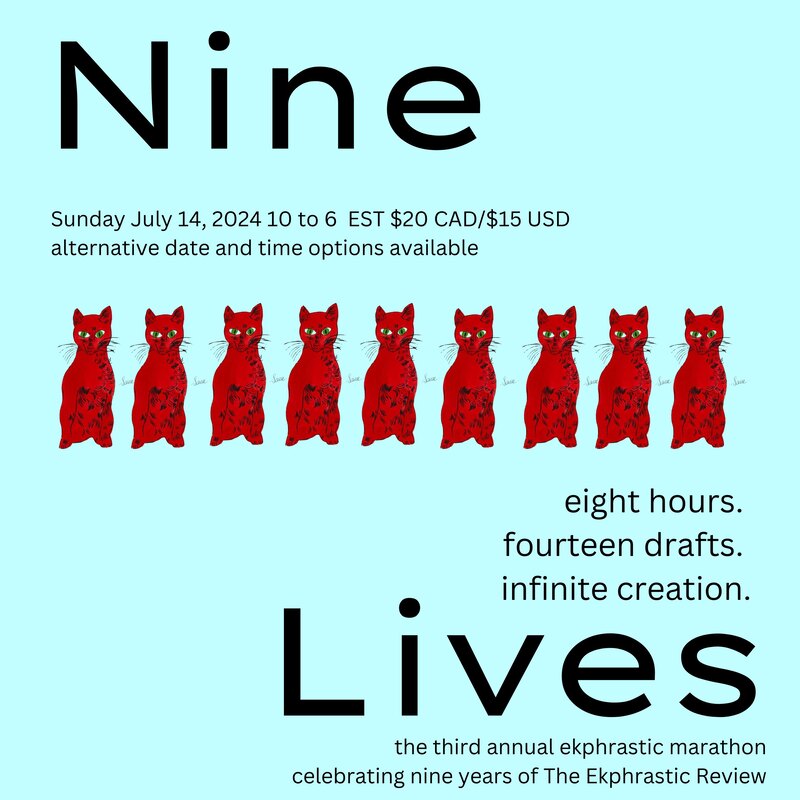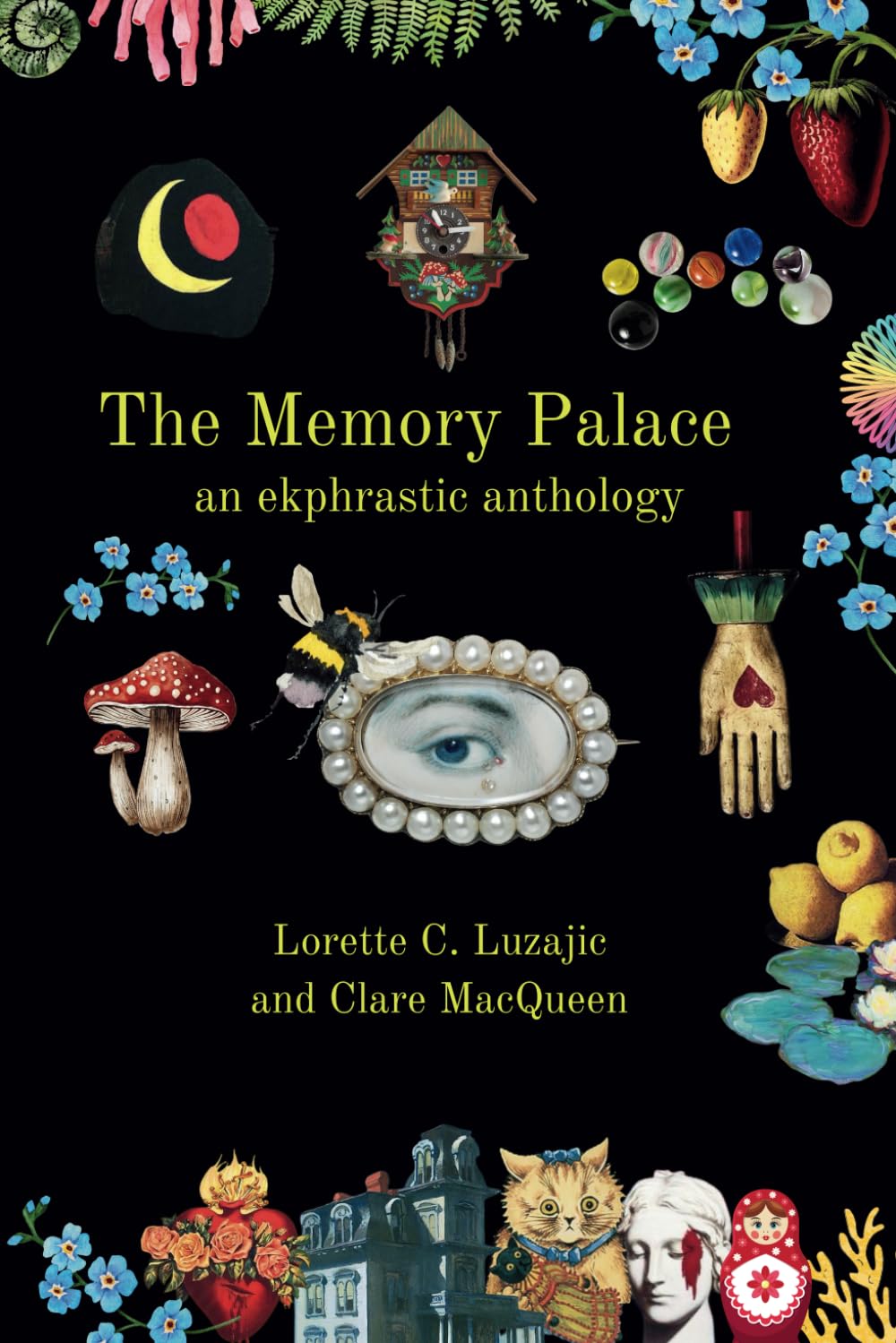|
With Pearls in My Hair One of the windows must be open; I feel a small breeze, almost a draft. It is practically impossible to get rid of the damp; the dark prints of mildew show everywhere. I find it is easier to remain motionless when I pay attention to the small things – trying to make sense of the faint household sounds from below, the indistinct voices, the, at times, hurried steps, and that final-sounding thud of the front door. At other times, I try to distinguish between the different kinds of bells tolling from the many church towers surrounding us. Right now, there is the unmistakable sound of water being sloshed on the cobblestones below; I keep listening, even while I watch the shimmering rectangle of light gaining purchase on the room. Sitting still like this for any length of time, while Rembrandt works in virtual silence, felt strange at first. I remember how uncomfortable I used to be under his gaze. I know his work, and know how it speaks of an eye that sees more than most. Just take his latest portraits, or his many self-portraits! Fine details are what he loves, small values in lines, the offset of shadow and light, and their dissolving into half tones... while I do not understand most of what he explains to me, I do know that he catches the essence of a person better than most, and often, better than one would like. The very first time he drew me could hardly have been called a sitting. It was on the third day after our betrothal, we were out in the country visiting my sister, when he called out to me, “Just stay like that, Saskia!” while he opened his sketchbook and started drawing. Watching him draw I was amused, and later on when he gave me the finished drawing, enchanted. This incident has remained one of my favourite memories of that outing. In the finished sketch I am wearing my much-loved, generously brimmed straw hat and I am holding an already wilting flower that I could not help picking while we ambled in the garden. Looking at the drawing now, I am amazed at the innocence and vulnerability of my expression. Today, Rembrandt asked me to arrange my hair using my long string of pearls; he suggested I wind it through my swept up hair. I had to rearrange my hair several times before he was satisfied and just the right number of stray curls framed my face. I’m also wearing my double strand of pearls and the pearl earrings that go with it. The dress he chose for me is the festive brown one with the ruched and bound sleeves. No, I find I do not mind sitting still like this – it frees my mind to keep my gaze locked on a certain point, and it allows me to drift to a place of listening and sensing, rather than acting. It feels peaceful and timeless and my mind drifts to thoughts I hold dear. Lately, I have wondered whether I might not be with child. Then I ask myself, would I know it if I were? The deep contentment that I feel, this sense of inner calm, this feeling of waiting for something as yet unknown, could that be part of it? We have not been married for very long. Being the wife half of “husband and wife” still feels strange to me. I have come to realize that in many ways my life so far has left me woefully unprepared for my role as a wife. I was only seven when my mother died and twelve when my father died. Perhaps I will not know how to make a good life for us, or how to be a good mother. I know my friends would think it tiresome to sit like that, and it is hard not to drift off to somewhere else, but I know Rembrandt does not mind where my mind goes as long as I do not move a muscle. The air coming in through the open window smells more and more like rotting fish and given the brackish water in the gracht down below this is hardly surprising. The odour sparks memories of Friesland where I grew up. How much cleaner the air had seemed to me at the North Sea and how much more powerful the force of the wind. I have a vivid picture of myself running along the damp beach at low tide daring the waves to touch me; and I remember coming home with the damp hem of my skirts clinging to my bare legs, leaving anklets of salt on my calves. Over there, at the other end of the room, at the very edge of my focus, I can barely make out Rembrandt’s latest self-portrait. It’s the one with the soft cap which, by the way, I can see he has dropped carelessly on the chair in the corner just below my red velvet hat hanging on the wall. That portrait shows a more private side of Rembrandt, the softness and ardour that are his as well, but that are often missing from his other self portraits. Perhaps I’m being fanciful, but I think that in some small way I have contributed to that expression, that new openness. I will suggest to him that we keep that portrait solely for ourselves, and for our children, who will, God willing, one day fill our lives. It is a fulsome quiet that fills the room, the only sound comes from the movement of the burin scraping the copper plate. Rembrandt explained to me once that the small curls of copper that are thrown up by the tool grooving the plate, will, once inked, give the image its soft lines and suggest shadows and fluidity. It seems to me an inexact way of working, as if part of the effect was left to chance, was unpredictable and unstable. The bells have started ringing again. I fancy I can make out the massive bell of the Westerkerk. There are so many churches and carillons all over Amsterdam, especially in this part of town, and so many of them start and finish just slightly out of step with one another. Yet each has its own distinctive tone, its own melodic voice of hymn and psalm that strive and merge only to be eventually drowned out by the general discord of everyday sounds, by the very life teeming around it. Here in the studio, time in its very timelessness is passing as well. Postscriptum: The next year, 1635, was going to be one of the worst plague years in living memory. One in five people in Amsterdam was about to die. Saskia was to bear Rembrandt four children, three of whom would die in infancy, one at the age of twenty-six. Saskia herself died at age thirty from tuberculosis. Rembrandt would live on until 1669. Barbara Ponomareff Barbara Ponomareff has been a child psychotherapist by profession. Since her retirement she has been able to pursue her life-long interest in literature, psychology and art. She has published a novella on the painter J.S. Chardin, and her short stories and poems have appeared in various literary magazines and anthologies.
0 Comments
Your comment will be posted after it is approved.
Leave a Reply. |
The Ekphrastic Review
COOKIES/PRIVACY
This site uses cookies to deliver your best navigation experience this time and next. Continuing here means you consent to cookies. Thank you. Join us on Facebook:
July 2024
|




